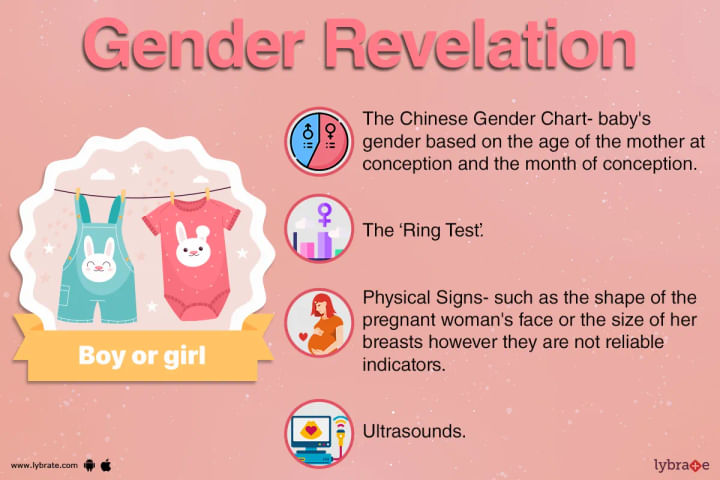How to know boy or girl during pregnancy at home
Pregnancy is an exciting time for expectant parents, and one common question that many people have is whether they will be having a boy or a girl. While there are several methods that claim to be able to predict the gender of a baby, it is important to understand that there is no foolproof way to determine the sex of a baby at home. In this article, we will explore some of the popular methods that people use to try to predict the gender of their baby, as well as the scientific evidence behind them.
The Chinese Gender Chart
One popular method that people use to try to predict the gender of their baby is the Chinese gender chart.This graph is based on an old Chinese way of determining a baby's gender based on the age of the mother at conception and the month of conception. The table indicates that a baby is more likely to be a boy if, for instance, the mother was under 24 when she became pregnant and the baby was born in the month of February.
The Chinese gender chart's accuracy, however, is not backed by any scientific data. In fact, according to a research that was published in the Journal of the American Medical Association, the chart's accuracy was no better than a chance. In other words, the chart is no more accurate at predicting the gender of a baby than simply flipping a coin.
The ‘Ring Test’
Another popular method that people use to try to predict the gender of their baby is the ‘ring test’. This involves suspending a ring from a thread and holding it over the pregnant woman's belly. If the ring swings back and forth, it is thought to indicate a boy, while circular movements are thought to indicate a girl. Again, there is no scientific evidence to support the accuracy of this method, and it is likely that the movements of the ring are simply the result of the expectant mother's own movements.
Physical Signs
Some people also claim that certain physical signs, such as the shape of the pregnant woman's face or the size of her breasts, can predict the gender of her baby. However, these physical signs are not reliable indicators of a baby's gender. The shape of a woman's face and the size of her breasts can be affected by a variety of factors, including genetics, weight gain, and hormonal changes, and are not specific to the gender of the baby.
Ultrasounds
Ultrasound is one approach that is frequently used to identify a baby's gender. An image of the unborn child in the womb is produced using high-frequency sound waves during an ultrasound, which is commonly done between 18 and 20 weeks into the pregnancy. During an ultrasound, the technician will look for the presence of certain physical characteristics that can indicate the baby's gender. For example, the presence of a 'penis' on a male fetus and the absence of a ‘penis’ on a female fetus can be used to determine the baby's sex.
While ultrasounds are generally considered to be accurate in determining the gender of a baby, they are not foolproof. In some cases, it can be difficult to see certain physical characteristics, particularly if the baby is positioned in a way that makes it difficult to see the genitals. In addition, there is a small margin of error when it comes to ultrasounds, and it is possible for the technician to make a mistake in identifying the baby's gender.
Conclusion
While there are several methods that people use to try to predict the gender of their baby, it is important to understand that there is no foolproof way to determine the sex of a baby at home. While ultrasounds are generally considered to be accurate, they are not foolproof and can sometimes be subject to error. It is best to wait until the baby is born to know for sure whether you are having a boy or a girl.



+1.svg)
